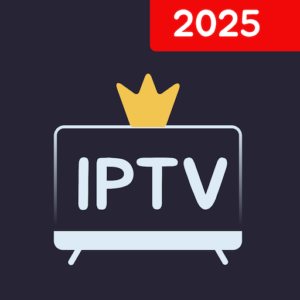The way we consume television has undergone a radical transformation over the past decade, and at the heart of this revolution is IPTV (Internet Protocol Television). As of 2025, IPTV continues to evolve rapidly, integrating new technologies, expanding into new markets, and redefining how content is delivered and consumed. But what lies ahead?
In this article, we’ll explore the key trends shaping the future of IPTV and what you should watch out for in 2025 and beyond.
📈 1. Exponential Growth in IPTV Subscribers
The global IPTV market is expected to grow at a compound annual growth rate (CAGR) of over 10% through 2028. With millions cutting the cord from traditional cable and satellite TV, IPTV continues to fill the gap with:
- On-demand content
- Multiscreen capabilities
- More flexible pricing
Emerging markets in Asia, Africa, and South America are also seeing massive IPTV adoption due to better internet infrastructure and smartphone penetration.
📶 2. 5G & Faster Networks Will Supercharge IPTV
The rollout of 5G networks globally is a game-changer for IPTV. Faster speeds, lower latency, and improved bandwidth mean:
- Smoother HD and 4K streaming
- Less buffering and lag
- Real-time streaming experiences, especially for sports and live events
This will also enable IPTV providers to introduce AR/VR streaming and immersive content formats.
🤖 3. AI-Powered Personalization
IPTV platforms are increasingly using Artificial Intelligence (AI) and machine learning to tailor content recommendations based on user behavior, preferences, and viewing history.
Expect to see:
- Smarter search and discovery features
- Dynamic ad targeting based on real-time data
- Personalized viewing timelines and content playlists
This not only improves user engagement but also opens up new revenue streams for advertisers and IPTV providers.
🧠 4. Integration with Smart Home & IoT Ecosystems
As smart homes become more common, IPTV will integrate deeply with IoT (Internet of Things) devices. Users will be able to:
- Control IPTV via voice assistants like Alexa, Google Assistant, or Siri
- Sync content between smart TVs, tablets, and phones
- Schedule recordings or reminders using smart home dashboards
IPTV will essentially become a seamless part of the connected home experience.
🔐 5. Enhanced Security & Legal Compliance
With the rise in IPTV usage, there’s also been a surge in piracy and unauthorized content distribution. In 2025 and beyond, expect:
- More crackdowns on illegal IPTV providers
- Blockchain-based solutions for content rights management
- Enhanced encryption and secure streaming protocols
Providers that focus on compliance, licensing, and content integrity will have a clear edge in the evolving IPTV space.
🎮 6. Interactive & Gamified IPTV Experiences
The line between entertainment and interactivity is blurring. IPTV providers are experimenting with gamified features and interactive content, including:
- Choose-your-own-adventure style shows
- Real-time viewer polls during live broadcasts
- Interactive ads with clickable overlays
This transforms passive viewing into an engaging, immersive experience—especially appealing to younger audiences.
🧾 7. Subscription Fatigue = Rise of Hybrid Models
As more users grow weary of managing multiple subscriptions (Netflix, Prime, IPTV, etc.), IPTV platforms are evolving to offer hybrid models, such as:
- Freemium access (free channels + paid VOD)
- Ad-supported plans to lower subscription costs
- Bundled packages with internet/phone services
This diversification helps IPTV compete more directly with streaming giants and traditional providers.
🌍 8. Localized & Niche Content Will Drive Growth
Global audiences are increasingly drawn to regional and niche content. IPTV services are expanding their libraries to include:
- Local language channels
- Cultural programming
- Community-focused streaming (religious, educational, regional sports)
This hyper-local approach not only increases viewer retention but also boosts monetization in underserved markets.
💡 Conclusion: IPTV Is Just Getting Started
IPTV in 2025 is no longer just an alternative to cable—it’s becoming the core of digital entertainment. From ultra-personalized viewing and interactive content to global scalability and smart home integration, the possibilities are endless.
As technology continues to evolve, IPTV providers who innovate, adapt, and deliver value will define the next era of digital media.



